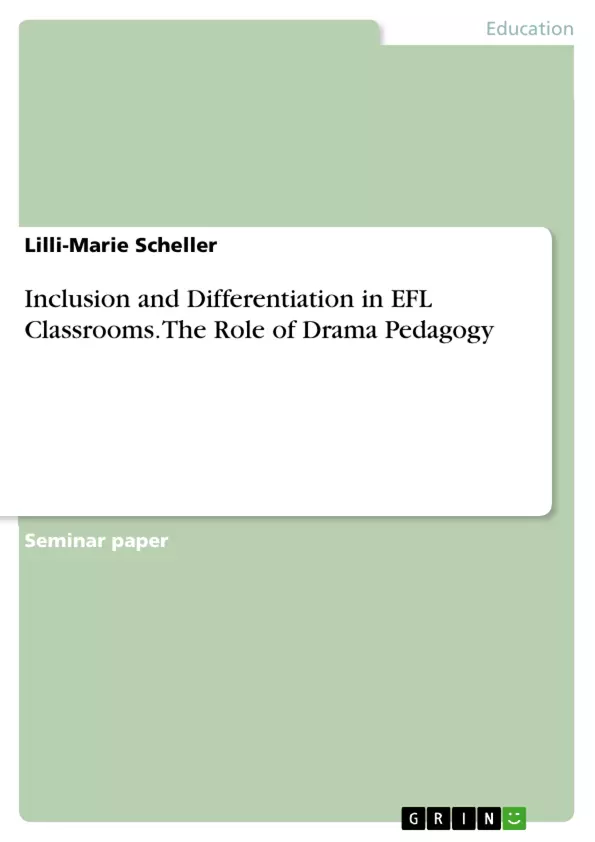This paper explores the challenges and opportunities of inclusive and differentiated teaching in English as a Foreign Language (EFL) classrooms, focusing on the role of drama as a tool to support these processes. While traditional models of homogeneous learning groups are outdated, the need for inclusion and individualized instruction is more pressing than ever. This paper reviews existing research on drama in the EFL context and examines how it can enhance language learning while fostering an inclusive environment. By considering both student and teacher perspectives, the paper highlights the potential of drama pedagogy to address the complexities of teaching heterogeneous groups in foreign language education, offering practical insights for inclusive and differentiated instruction.
Inhaltsverzeichnis (Table of Contents)
- Introduction
- Inclusive Education
- Heterogeneity as a Chance for EFL Teaching
- Drama
- What is Drama in an Educational Context?
- How Drama Promotes Language Learning
- Linguistic competences
- Personal competences
- Motivation
- Drama Works with Diversity
- Learner types
- Prototypical examples of a heterogenous EFL classroom
- The potential of drama to raise awareness about heterogeneity
- Limitations of Using Drama in the Inclusive EFL Classroom
Zielsetzung und Themenschwerpunkte (Objectives and Key Themes)
This paper aims to explore the use of drama as a tool for promoting inclusion and differentiation within the EFL classroom. It investigates how drama can address the challenges posed by heterogeneous learning groups, leveraging the diverse abilities and learning styles of students. The research reviews existing literature on drama in EFL and examines its potential benefits for language acquisition and social integration.
- Inclusive education in EFL classrooms
- The role of drama in language learning and acquisition
- Utilizing heterogeneity as a strength in EFL teaching
- Drama techniques and activities for diverse learners
- Addressing limitations and challenges of drama-based instruction in inclusive settings
Zusammenfassung der Kapitel (Chapter Summaries)
The Introduction sets the stage by highlighting the theoretical and practical challenges of inclusive education in EFL. Chapter 1, Inclusive Education, discusses the reality of heterogeneous classrooms and defines key terms. It emphasizes the inadequacy of "one-size-fits-all" approaches and the importance of inclusive teaching methodologies. Section 1.1, Heterogeneity as a Chance for Drama in EFL Teaching, introduces drama as a potential solution, showcasing how it can utilize diverse student abilities and foster collaboration. Chapter 2, Drama, begins by defining drama in an educational context, distinguishing between drama activities and techniques. Section 2.2, How Drama Promotes Language Learning, explores how drama enhances linguistic competence through various activities, promoting authentic communication and memorable learning experiences.
Schlüsselwörter (Keywords)
Inclusive education, EFL, drama, heterogeneous classrooms, language learning, differentiated instruction, communicative approach, drama techniques, learner diversity, social inclusion.
- Citar trabajo
- Lilli-Marie Scheller (Autor), 2021, Inclusion and Differentiation in EFL Classrooms. The Role of Drama Pedagogy, Múnich, GRIN Verlag, https://www.grin.com/document/1509963



